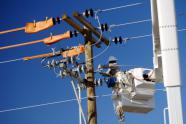Demand Response is more than Mainstream

Demand response (DR) as a topic is well into its adolescent
years. Together with its siblings, Time of Use and
Interruptible Rates, DR has opened the door for large commercial
energy customers to reduce costs while improving electric grid
stability.
DR offers an actual revenue stream to those customers; and in many
locations, alternate means of accessing markets to maximize that
revenue. Early DR implementations were both crude and manual.
Facility managers would receive signals, then manually change
control settings to lessen energy demand to a predetermined level,
then wait weeks to see if it worked. The local DR sponsor (a utility
or third party aggregator) would disburse cash weeks or months
later.
While older, those techniques have taught us much -- lessons to cope
in a new energy world: New EPA rules are forcing utilities to shut
down major coal generating plants while state laws mandating a
specific percent of renewable energy use introduces grid stability
issues. And, energy demand will increase an average of 0.7% annually
over the foreseeable future, says the Energy Department, while the
grid is aging and causing stress points.
This means energy costs will increase over the next ten years.
Moreover, policy makers are discussing ways to expose all customer
sectors to the true volatility of energy demand. The use of energy
will become more expensive over the next ten years, and the time of
use will have a far greater impact. Additionally, energy
managers will have to face challenges, such as tenants with electric
vehicles and the increasing use of electric powered technology.
What has old-style DR taught us that can help us solve these
problems? Quite a bit, actually.
DR metering provided some of the first insights about how we use
energy and when. This data made it clear that large buildings were
living organisms with distinct patterns and trends, and it also
provided indications of errors, such as simultaneous heating and
cooling, over conditioning of empty space, and so much more.
Wealth of Data
DR showed that energy meters could provide a wealth of data far
beyond energy demand and consumption information, which if properly
interpreted could lead facility managers to better decision making
and ultimately to lower costs and greater reliability.
Now, savvy building managers are using techniques learned in demand
response to actively manage their energy usage and reduce costs.
With better energy profile information, managers in competitive
energy markets can negotiate a less expensive supply contract. The
industry has seen examples of dramatic savings, often in the range
of 6-15 percent. Is it any wonder that the US Green Building
Council now considers DR program participation for LEED points?
Meanwhile, back on the grid, utilities were quick to realize this
same demand response data gave them new insights about system
health. Many of us assume our local energy supplier knows when we
have a power outage or if a piece of critical grid equipment has
failed. However, this is not always true. In many cases,
utilities rely on customers to call and inform them. DR
metering at customer sites provides data rapidly (every 15 minutes
or so) and through different channels (Internet or telecom system
rather than utility meter systems). This means it is much
faster and it is redundant, both elements of reliability.
Utility lessons learned from DR data have given rise to the concept
of Smart Grid which is nothing more than the addition of
communications abilities between physical elements of the grid.
Smart Grid technologies enable a bi-directional flow of information
between end users and utilities. This ability has started to
lead DR to evolve towards being a more active energy management
tool, often called DR 2.0 or Demand Management.
The next energy frontier is connecting the Smart Grid to the Smart
Building. This will enable real-time communication between
building energy management systems and utilities or DR aggregators,
and make DR 2.0 a reality. The technology exists today and
some utilities are working with the local buildings community on
pilot programs.
On the grid side, utilities use similar models to monitor grid
health and power costs. They can locate trouble spots or
provide useful data to customers on predicted spot price increases.
DR will become less invasive, more pervasive, and a mainstream part
of our relationships with energy suppliers. To that end, in this new
energy world energy consumers and utilities must work together to
make more intelligent energy management decisions; DR 2.0 will help
to facilitate this process. As building operators consider
future investments, they would be wise to plan for the next energy
frontier: DR 2.0.
Phil Davis, is Senior Manager, Demand Response Solutions, Schneider
Electric
Copyright © 1996-2011 by CyberTech, Inc. All rights reserved.
To subscribe or visit go to: http://www.energycentral.com
To subscribe or visit go to: http://www.energybiz.com